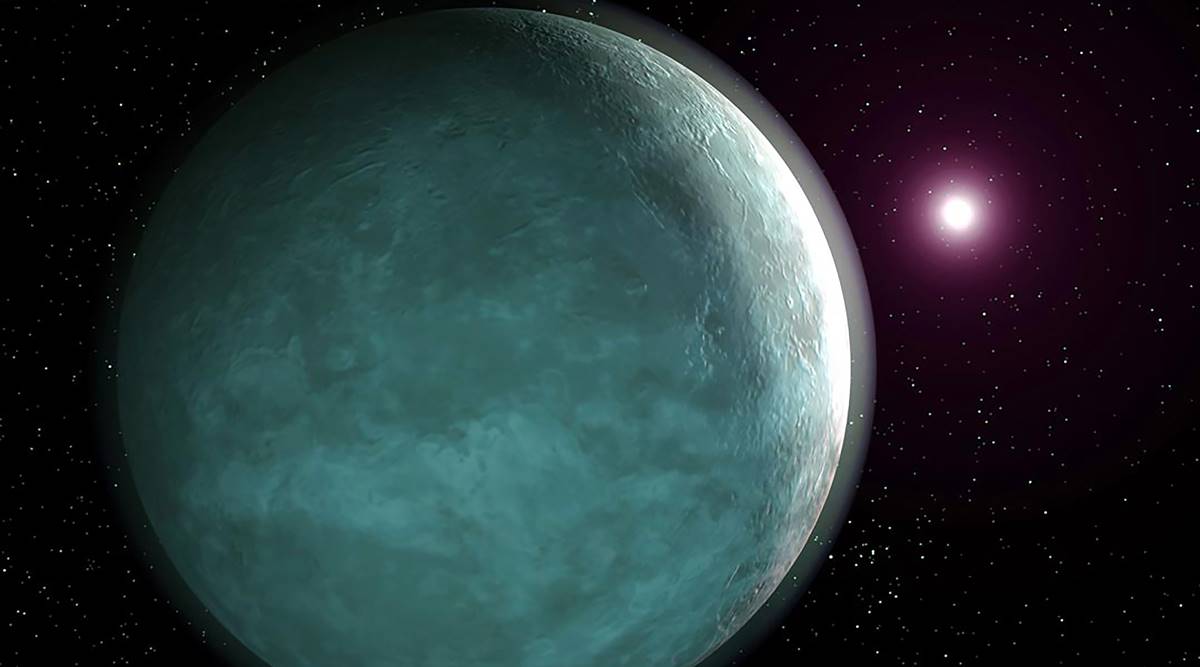
Star methods are available in all styles and sizes. Some have a number of planets, some have bigger planets and others don’t have any planets in any respect. However a very uncommon system about 150 light-years from our personal has scientists scratching their heads.
In 2016, astronomers found two planets orbiting the star HD 3167. They have been regarded as super-Earths — between Earth and Neptune in measurement — and circled the star each one and 30 days. A 3rd planet was discovered within the system in 2017, orbiting in about eight days.
What’s uncommon is the inclinations of the outer two planets, HD 3167 c and d. Whereas in our photo voltaic system all of the planets orbit in the identical flat aircraft across the solar, these two are in polar orbits. That’s, they go above and under their star’s poles, slightly than across the equator as Earth and the opposite planets in our system do.
Now scientists have found the system is even weirder than they thought. Researchers measured the orbit of the innermost planet, HD 3167 b, for the primary time — and it doesn’t match the opposite two. It as a substitute orbits within the star’s flat aircraft, like planets in our photo voltaic system, and perpendicular to HD 3167 c and d. This star system is the primary one recognized to behave like this.
“It was clearly a shock,” mentioned Vincent Bourrier, from the College of Geneva in Switzerland, who led the discovery revealed final month within the journal Astronomy & Astrophysics. “That is one thing radically completely different from our personal photo voltaic system.”
Whereas not one of the planets are regarded as liveable, have been you to face on one you’d see a slightly intriguing view of this peculiar system. “When you had a telescope and also you have been wanting on the trajectory of the opposite planets within the system, they might be going vertically within the sky,” Bourrier mentioned.
Discovering exoplanets in polar orbits just isn’t wholly uncommon, mentioned Andrew Vanderburg of the Massachusetts Institute of Expertise, who led the preliminary discovery of HD 3167 c and d however was not concerned within the new analysis. However the perpendicular nature of this method “is odd,” he mentioned.
The most recent discovery was made potential by an instrument on the Very Massive Telescope in Chile, known as ESPRESSO. Utilizing extraordinarily exact measurements of the star, the scientists have been capable of monitor the course by which the innermost planet was passing in entrance of its star relative to us, referred to as a transit, and work out the angle of its orbit.
The misalignment within the system might end result from an unseen object in its outer reaches. Shweta Dalal, from the College of Exeter in England, has studied the system and mentioned there was proof of a Jupiter-size planet orbiting the star each 80 days. The gravitational impact of this world might have pushed the outer two planets into their uncommon orbits, whereas the innermost planet remained locked to the star owing to its tight orbit.
“A Jupiter-sized planet may very well be huge sufficient to tilt the planets,” Dalal mentioned.
Whereas our photo voltaic system has its personal huge Jupiter, the broader orbits of our planets means the identical destiny has not befallen Earth or the opposite planets. In distinction, the planets that orbit HD 3167 “are all throughout the orbit of Mercury,” Dalal mentioned, and thus shut collectively, magnifying the consequences of their interactions.
Upcoming observations might reveal extra methods like this. The European House Company’s Gaia telescope, which is mapping billions of stars within the Milky Means, is predicted to disclose information quickly on 1000’s of big planets in different star methods, together with inclination information for people who transit. Bourrier and his workforce additionally hope to make use of ESPRESSO to make related observations of different methods.
The bizarre configuration of HD 3167 highlights simply how bizarre different stars and their planets might be. “It places in perspective once more what we predict we all know in regards to the formation of planetary methods,” Bourrier mentioned. “Planets can evolve in actually, actually other ways.”
This text initially appeared in The New York Instances.


